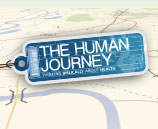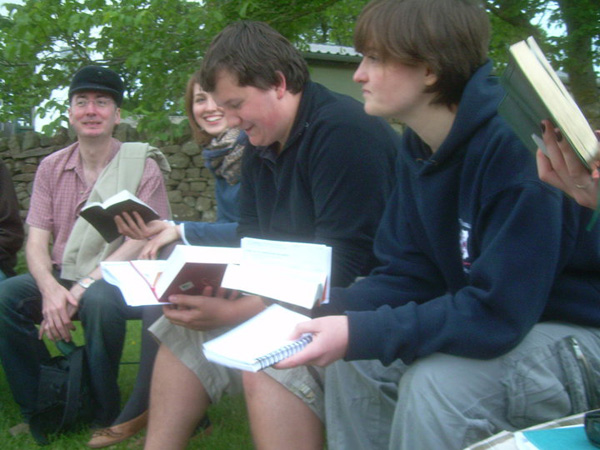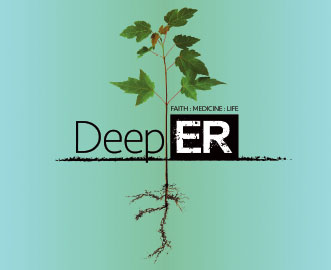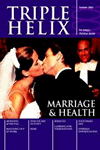Reiki appears to be a relatively new form of an ancient Buddhist healing practice, characterised by the laying on of hands. An early survey by the Consumers’ Association in 1995 found that around five percent of alternative therapy users consulted spiritual healers including Reiki therapists, a relatively small market share. Reiki has, however, since increased very considerably in popularity, particularly amongst those associated with the holistic healing approach of New Age philosophy and practice.
Definition
Reiki is also identified as the Usui system of Natural Healing. It is presented as: ‘an effective system for healing and stimulating mental, emotional and spiritual growth’, offering relief from stress, unhappiness, depression and disease.[1] Its essential philosophy is identified in the two components of its name:
Rei - invisible and universal source of all being
Ki - life force or energy
Ki is comparable to the chi of Chinese acupuncture and other expressions of life force in different cultures and traditions.[2]
Eleanor McKenzie, in her book, Healing Reiki, states, ‘Reiki is primarily perceived as a practice for healing the body but it is also a method for healing the mind and spirit’.[3] Walter Lubeck, a prominent Reiki teacher, writes, ‘…in the holistic, natural sense, Reiki energy stimulates the body to heal’.[4]
Origins
Whilst similar practices have been traced back to Egyptian, Indian, Polynesian and Asian cultures, Reiki is based on ancient Buddhist healing technique. Mikai Usui (born 1860), a Japanese scholar and Buddhist monk, initiated the present Usui system of healing towards the end of the nineteenth century. He had become passionately interested in miraculous healing and travelled extensively in USA and elsewhere in search of answers, eventually returning to a Zen Buddhist monastery in Japan. He spent 21 days fasting at the top of Mount Kurayama, near Kyoto, and described being struck by a ray of light from heaven that he accepted as a dramatic initiation into the Healing Power of Universal Life Energy. Descending from the mountain, he put his newfound power into action, apparently with dramatic results.
He developed Reiki Healing, which gradually spread across Japan in the early 1900’s. Recognising Usui as the First Grand Master, the secrets of Reiki were handed down in hierarchical fashion to Dr Chujiro Hayashi and from him to a Hawaiian lady, Hawayo Takata. Her granddaughter, Phyllis Lei Furumoto continued to teach and practise Reiki in many quarters of the World. Reiki Masters formed the Reiki Alliance in 1981. There are now many varieties of Reiki, with modifications and practices believed to have been received directly from the Ascended Masters, including Dr Usui himself; this process can be compared with the channelling of New Age spirit guides. Healing rays of Reiki are said to emanate directly from The Creative Force, Mother/Father God or Divine Intelligence.
Present practice
Today, practical Reiki healing is a gentle handson technique, said to work by channelling energy into the body by placing the therapists’ hands on 12-20 specific areas, usually over energy centres called chakras, for a few minutes. Seven chakras are usually described: crown, forehead, throat, heart, solar plexus, sexual and root, which are said to relate to all body organs but particularly endocrine glands.[5] These are clearly comparable with the chakras described in the Hindu practice of yoga and other varieties of alternative therapies based on energy concepts.
It is suggested that the healing power of Reiki can affect animals and inanimate objects; flow into walls, plants and food; improve the efficiency of household appliances and even repair computers and cars.[6] A video presentation of Reiki showed the person being grounded - returned to their normal state after treatment - by drinking a glass of cold water. This suggests that an altered state of consciousness or hypnosis might be involved.[7]
Reiki is recommended for acute and chronic conditions including viral infections, migraines, eczema and psoriasis, arthritis, and both mental and spiritual problems. It is increasingly used in hospices for the treatment of breathless patients.
Reiki healers adhere to strict forms of initiation from a Reiki Master through the laying on of hands, spiritual attunement and training at three levels or degrees. The first degree, usually over the course of two days, involves receiving and channelling Universal Life Force. In the second degree, Reiki knowledge and power is expanded using secret mantras and symbols. Distant healing is taught and practised, sometimes whilst holding a photograph of the sick person. The third degree primarily involves initiation as a Reiki Master and Teacher. Reiki treatment and initiation can be expensive. The UK Reiki Foundation lists practitioners and provides education and therapy.
Medical checklist
Is there a logical, scientific basis?
No credible scientific basis can be identified in this therapy. Some researchers suggest that there may be an effect through the endocrine glands, possibly stimulated through chakras (energy centres). Others suggest that endorphins may be involved. This can, however, only be speculative: no evidence has been produced for these theories. Because of Reiki’s essentially spiritual nature, there has been little scientific investigation. Reiki manuals emphasise relaxation and stress reduction rather than physical healing; again, this makes scientific evaluation difficult.
Does it work?
Evaluating the effectiveness of touch and energy therapies can be extremely difficult; finding a suitable placebo for clinical trials can be especially problematic. The Department of Complementary and Alternative Medicine at Exeter University performed a systematic review of distant healing: only 23 out of 100 trials were considered rigorous enough to be admitted to the survey. Of these, only one included Reiki as one arm of the trial and no firm conclusions could be drawn.[8] Its teachers emphasise that Reiki does not set out to replace orthodox medical care. Therapists emphasise the benefits of following the Reiki spiritual path: improved holistic health with the expectation that this may include physical healing.
Is it safe?
The nature of this therapy does not suggest the likelihood of any specific medical dangers. Medical researchers have not found any significant safety concerns. If a hypnotic element is involved, this might bring associated dangers such as altered awareness and later personality problems. Reiki is not considered suitable for psychiatric patients. The usual warnings regarding alternative therapies must apply: delays in either orthodox medical diagnosis or obtaining effective medical treatment may be dangerous.
Christian checklist
From a Christian perspective, there certainly are spiritual dangers, which cannot be ignored. The concept of Rei as the invisible source of all being and of Ki as the Universal Life Force are completely at variance with the Christian belief in God as Creator and Heavenly Father. Reiki claims to be independent of any religious belief systems but Buddhist, Hindu and Taoist influences can be clearly identified. Reiki healers often have strong New Age associations, at times using occult techniques, crystals and tarot cards. Divination, necromancy and the receiving of knowledge and power by channelling are forbidden in the Bible.[9] It has been suggested that the Reiki laying on of hands is similar to the healing miracles of Jesus and his disciples. Yet we need to ask, ‘By what spirit is this being applied?’
Conclusion
Reiki claims to be a spiritual path leading to physical, mental, emotional and spiritual attunement, harmony, good health and happiness. As a holistic therapy with Buddhist roots, it clearly has serious spiritual implications but does not and cannot supply answers for the basic spiritual sicknesses of mankind such as sin, guilt, fear and the need for forgiveness and salvation. Surely healing rays or an impersonal life force cannot deal with these problems. Only the Christian gospel provides a cure for such sickness. For Christians, only the power of God’s Holy Spirit can provide acceptable and effective healing. We need to be aware of counterfeits and certainly not be involved in them, however harmless they may appear at first sight.
Believe not every spirit, but try the spirits whether they are of God. (1 John 4:1 KJV)
Bibliography
- Ernst E. Desktop Guide to Complementary & Alternative Medicine. London: Mosby, 2001
- Lubeck W. Reiki: Way of the Heart. Twin Lakes: Lotus Light, 1996
- McKenzie E. Healing Reiki. London: Hamlyn, 1998
- Rowlands B. WHICH? Guide to Complementary Medicine. London: WHICH? Books, 1997
- Welch I. What is Reiki? Llewellyn, 2001 (Video)
































